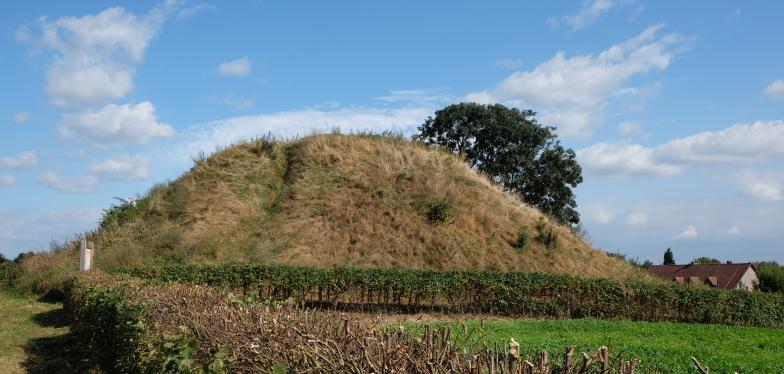What do those giant mounds in Haspengouw mean?

Wide fertile fields, circular views, hollow roads, peace and quiet, orchards around the village centres, square farmhouses, castles, marl quarries and ... Gallo-Roman burial mounds in Haspengouw.
In the 1st century B.C., the Roman general Julius Caesar headed north with his army to conquer all of Gaul. Initially, he suffered a crushing defeat at Tongeren against the Eburones, a Celtic tribe led by Ambiorix. But then the course of the war turned. The Eburones would eventually lose out and make way for their opponents, the Tungri, another Celtic tribe that may have made a deal with the occupying force.
Haspengouw is located in the heart of the Roman province of Civitas Tungrorum. For the Romans, cities were at the heart of their civilization. In 10 B.C, the then Emperor Augustus founded the city of Tongeren, at the place where the river Jeker crosses the main route from Cologne to Bavik. It grew into an important centre of power, administration, trade and culture, with magnificent residences, theatres, baths, temples and outside the 5 km long wall extensive burial grounds or tumuli, located in the immediate vicinity of the villae, the farms, and the large roads or their side roads.
In total, about a hundred wealthy families, the local elite, owned one or more such villae in Haspengouw. They adopted the Roman lifestyle to distinguish themselves from other leading families and the common people in other provinces. They adorned themselves with the refined clothing and exotic jewels of the Romans, to display their familiarity with Roman culture. But at the same time, they wanted to preserve something of their own culture; hence the term Gallo-Roman. They replaced their houses made of wood and clay with Roman residences made of stone, with mosaic floors, murals, a cellar, etc. The houses stood in spacious estates of 200 by 125 m, next to stables, barns, workshops and the staff quarters. The villae were built on smaller plots than today, surrounded by high and wide hedges, wheat and spelt, which were exported to the soldiers in the Rhineland, on the eastern border of the empire.
Even after his death, such a parvenue-like villa owner, especially in Haspengouw, still wanted to stand out in the eyes of the community. He insisted that he, his wife or another important member of his family be cremated like a prominent Roman, and that his remains be buried in a room of wood or stone with a tumulus, a steep earthen burial mound sometimes 50 m in diameter and 15 m high. Complete with precious ancillary gifts, such as pottery, bronze bowls and bowls, glass bottles ... which the deceased could use on his journey to the underworld. Coveted status symbols.
Of the hundreds of tumuli in Haspengouw, built between 70 and 250 A.D., some 15 remain in Limburg. Be sure to check out these unusual bulges in the landscape.